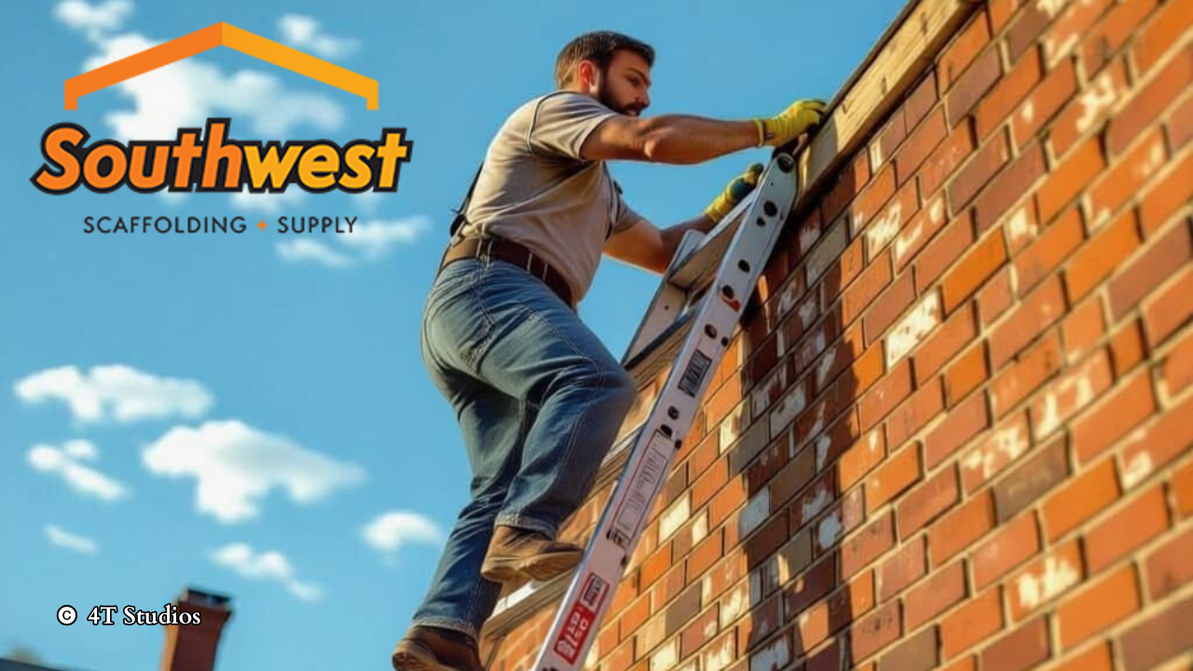DIY Masonry Projects: When and How to Use Scaffolding
If you’re a homeowner tackling your own masonry repairs or small installations, you already know that a solid ladder often just isn’t enough. Stability, reach, and safety matter—especially when you’re dealing with brick, stone, or mortar up on a wall. That’s where scaffolding comes in.
But before we talk equipment, let’s be honest about something:
Masonry may look easy, but it takes years of experience to become competent.
This becomes even more true with older homes, historical buildings, and any project involving tuckpointing, where matching mortar types, colors, textures, and tooling makes all the difference between a seamless repair and a permanent eyesore.
That doesn’t mean a motivated homeowner can’t handle certain masonry jobs—it just means the right setup and safety measures are non-negotiable.
When DIY Homeowners Should Consider Using Scaffolding
1. When the Work Is Above Shoulder Height
Anytime you’re lifting masonry materials, bricks, buckets of mortar, or stone, your balance and leverage matter. Scaffolding gives you:
- More workspace
- A safe surface for tools and materials
- Stability you won’t get from a ladder
2. When Working on Chimneys, Gables, or Second-Story Walls
Ladders are dangerous for prolonged or precision work. A scaffold platform lets you move freely and work efficiently without constant repositioning.
3. When Tuckpointing or Repairing Historic Masonry
Older masonry often uses mortar types that must be matched carefully. This work is slow, delicate, and needs a stable working platform—not a ladder you’re clinging to with one hand.
4. When You Need to Work Horizontally Across a Wall
Scaffolding lets you walk and work across a section without stopping to move a ladder every 3 feet. This improves quality, speed, and safety.
Best Types of Scaffolding for DIY Masonry
Rolling Scaffold Towers
These are ideal for homeowners because they are:
- Easy to assemble
- Lightweight but sturdy
- Simple to reposition
- Great for siding, masonry, and light exterior repairs
Southwest Scaffolding’s rolling towers are especially popular for chimney repairs, tuckpointing, stone veneer installs, and brick patching.
Frame Scaffolding Sets
For larger or longer-term projects, traditional frame scaffolding gives you the stability and working room needed for heavier repairs.
Practical & Safety Tips for DIY Masonry Work
1. Don’t Underestimate the Skill Required
A professional mason’s eye for level, plumb, bond pattern, and mortar tooling comes from years of doing this every day.
For tuckpointing or anything involving historic mortar, always research mortar types—or hire a pro to match it—for structural reasons and appearance.
2. Make Sure Your Scaffolding Is Set Up Correctly
- Use level ground or adjustable base plates
- Secure cross-braces
- Install guardrails on taller towers
- Use proper planks rated for load
- Lock casters before climbing a rolling tower
3. Wear PPE—Even for Small Jobs
- Safety glasses
- Work gloves
- Steel-toe or sturdy work boots
- Dust mask or respirator (especially for grinding old mortar)
4. Know When to Call in a Professional
These situations are better left to experienced masons:
- Structural brick repair
- Bulging or bowing walls
- Chimneys with deep cracking
- Anything involving water intrusion
- Historic restoration requiring lime-based mortars
Final Thoughts
DIY masonry can be rewarding, but it must be approached with caution, the right tools, and respect for the craft. Scaffolding helps homeowners work safer, smarter, and more efficiently, whether you’re patching brick, repairing a chimney, or taking on your first tuckpointing project.
For the safest and most reliable equipment, Southwest Scaffolding offers a full range of scaffold systems, rolling towers, and accessories perfect for homeowner projects and professional crews alike.
Recent Posts
-
Working With Scaffolding in Winter
Winter may slow construction down, but it doesn’t stop it, and when scaffolding is involved, cold-se …Dec 8th 2025 -
When Renovation Turns Risky: Lessons from the Tai Po Fire and the Role of Scaffolding Safety
The recent fire in Hong Kong’s Tai Po district has shaken the global construction and safety communi …Nov 30th 2025 -
Innovations in Scaffolding Technology: How Modern Advances Boost Safety and Efficiency
Scaffolding is fundamental to construction, masonry, restoration, and maintenance work. While the co …Nov 29th 2025




